Vivarium Lighting Basics
Proper lighting is crucial and will make or break any design. Wrong color spectrums, too little light, and too much heat/UV are very common mistakes made by novice designers. Here I outline the basic reasoning for proper lighting and some key products that will allow your tropical/desert vivarium to shine bright.
Plant Photosynthethic Requirements
Photosynthesis is likely the most important set of reactions on the planet. The absorption of radiation by various pigments found in the chloroplast of plant/algae cells allows for the suns energy to be harnessed, producing the needed energy to form carbohydrates from atmospheric CO2. Along the way water is split to produce the needed protons to drive part of the reaction, leaving O2, as a byproduct. It is due to the abundance of this by-product that oxidative respiration is possible and you and I can breathe.
In each plant there are different concentrations of these various light capturing pigments, but the primary one is chlorophyll a, with chlorophyll b and carotenoids filling out the absorption spectrum. Even with all of these pigments, only certain spectrums of radiant energy are capable of being absorbed. The two most commonly absorbed wavelengths, 440nm and 660nm, correspond with red and blue visible light. You can see on the graph the absorption spectrums of the plant pigments below.
By noting the absorption spectra on the graph, one could assume that giving vivarium plants primarily red and blue spectra would be optimal. However, as these spectra are absorbed by the pigments and not radiated back, using plant bulbs that give only these spectrums yield very little color to your tank. Since the colors we see is what is NOT absorbed by an object, removing the greens/yellows/purples, from the light (as plant specific light blubs do) makes a vivarium look dark, as the plants will reflect very little light back at you. So while plant specific grow bulbs produce wavelengths that are the ones plants will use, keep in mind that using these alone will make your tank look like the tank below. Consider using fuller spectrum or "daylight" lights to allow your design to properly shine. You'll likely pay less than the plant grow bulbs too.
Photosynthesis is likely the most important set of reactions on the planet. The absorption of radiation by various pigments found in the chloroplast of plant/algae cells allows for the suns energy to be harnessed, producing the needed energy to form carbohydrates from atmospheric CO2. Along the way water is split to produce the needed protons to drive part of the reaction, leaving O2, as a byproduct. It is due to the abundance of this by-product that oxidative respiration is possible and you and I can breathe.
In each plant there are different concentrations of these various light capturing pigments, but the primary one is chlorophyll a, with chlorophyll b and carotenoids filling out the absorption spectrum. Even with all of these pigments, only certain spectrums of radiant energy are capable of being absorbed. The two most commonly absorbed wavelengths, 440nm and 660nm, correspond with red and blue visible light. You can see on the graph the absorption spectrums of the plant pigments below.
By noting the absorption spectra on the graph, one could assume that giving vivarium plants primarily red and blue spectra would be optimal. However, as these spectra are absorbed by the pigments and not radiated back, using plant bulbs that give only these spectrums yield very little color to your tank. Since the colors we see is what is NOT absorbed by an object, removing the greens/yellows/purples, from the light (as plant specific light blubs do) makes a vivarium look dark, as the plants will reflect very little light back at you. So while plant specific grow bulbs produce wavelengths that are the ones plants will use, keep in mind that using these alone will make your tank look like the tank below. Consider using fuller spectrum or "daylight" lights to allow your design to properly shine. You'll likely pay less than the plant grow bulbs too.
Quality and Quantity of Your Light
With keeping in mind the proper spectrums that plants need to grow, we can begin to look into what the proper intensity should be. Most small tropical plants available at your local nursery or home improvement store are considered ‘houseplants’. This delegation refers that they are suited to the typical low light conditions found inside the home. Even inside a brightly lit home the total lumen output is still going to be mere fractions of even indirect outdoor sunlight. This is why it is recommended that you put your houseplants near a window as indirect light coming in from a window will still be more intense than most home lights. To give an example, full South Texas sunlight at noon reads ~4,000 fc on a digital lumen reader, while a single 100 watt spiral compact fluorescent will only read a mere 1200 4" under it. When deciding what lights to go with, look at the total lumen output of the bulb and the spectrums it puts out.
There are multiple different lighting methods currently available on the market ranging from high-dollar high-intensity LEDs, to low cost spiral compact fluorescents. Knowing exactly which type of lighting will be proper for your vivarium will depend on a few things.
Vivarium Height
The further away you get from a light source the less intense it is. A tall vivarium is going to require much stronger light to be able to reach down even a few feet for the plants at the bottom. Also stronger lights will be needed to counter act the shadowing from the plants closer to the light source.
Available Room on Top of Setup
This can often determine the kind of light fixture you will be able to use. Keep in mind there are wall, ceiling, and lamp post fixture options out there.
Heat Output
Certain types of lights put out much more heat than others. It mostly depends on the efficiency of the bulb and the total wattage of the bulb. In theory a 23watt spiral compact fluorescent should be putting out less heat than a 40 watt incandescent bulb, but has over double the lumen output.
Color Spectrums
Different types of lights are capable of putting out different color spectrums. Be sure to check the box and determine the listed Kelvin of light. You can see here a basic example of the color differences between bulbs. A common mistake is to use too low of a K light, resulting in a very yellow looking vivarium. Avoid "Soft" or "Bright White" lights and use "Daylight or 6500K" to get a vibrant lush look.
Animal Type
Depending on the type of animals you are keeping in your vivarium will depend on the type of lighting. If you have UV dependent animals, having bulbs that put out proper levels of UV will be necessary. Often people will use the spiral compact fluorescent UV bulbs as they are relatively inexpensive. However for desert animals or a long distance between the light and the animal basking area, High Intensity Murcury Vapor UV lights are worth looking into.
Your Budget
Lighting can be very costly, but shouldn’t be skimped on. In your planning of the build cost, be sure to include the cost of properly lighting it as this will ultimately determine how the entire build is viewed. No sense spending a lot money and effort on making something and it looking dark or yellow due to cheep/improper lights.
With keeping in mind the proper spectrums that plants need to grow, we can begin to look into what the proper intensity should be. Most small tropical plants available at your local nursery or home improvement store are considered ‘houseplants’. This delegation refers that they are suited to the typical low light conditions found inside the home. Even inside a brightly lit home the total lumen output is still going to be mere fractions of even indirect outdoor sunlight. This is why it is recommended that you put your houseplants near a window as indirect light coming in from a window will still be more intense than most home lights. To give an example, full South Texas sunlight at noon reads ~4,000 fc on a digital lumen reader, while a single 100 watt spiral compact fluorescent will only read a mere 1200 4" under it. When deciding what lights to go with, look at the total lumen output of the bulb and the spectrums it puts out.
There are multiple different lighting methods currently available on the market ranging from high-dollar high-intensity LEDs, to low cost spiral compact fluorescents. Knowing exactly which type of lighting will be proper for your vivarium will depend on a few things.
Vivarium Height
The further away you get from a light source the less intense it is. A tall vivarium is going to require much stronger light to be able to reach down even a few feet for the plants at the bottom. Also stronger lights will be needed to counter act the shadowing from the plants closer to the light source.
Available Room on Top of Setup
This can often determine the kind of light fixture you will be able to use. Keep in mind there are wall, ceiling, and lamp post fixture options out there.
Heat Output
Certain types of lights put out much more heat than others. It mostly depends on the efficiency of the bulb and the total wattage of the bulb. In theory a 23watt spiral compact fluorescent should be putting out less heat than a 40 watt incandescent bulb, but has over double the lumen output.
Color Spectrums
Different types of lights are capable of putting out different color spectrums. Be sure to check the box and determine the listed Kelvin of light. You can see here a basic example of the color differences between bulbs. A common mistake is to use too low of a K light, resulting in a very yellow looking vivarium. Avoid "Soft" or "Bright White" lights and use "Daylight or 6500K" to get a vibrant lush look.
Animal Type
Depending on the type of animals you are keeping in your vivarium will depend on the type of lighting. If you have UV dependent animals, having bulbs that put out proper levels of UV will be necessary. Often people will use the spiral compact fluorescent UV bulbs as they are relatively inexpensive. However for desert animals or a long distance between the light and the animal basking area, High Intensity Murcury Vapor UV lights are worth looking into.
Your Budget
Lighting can be very costly, but shouldn’t be skimped on. In your planning of the build cost, be sure to include the cost of properly lighting it as this will ultimately determine how the entire build is viewed. No sense spending a lot money and effort on making something and it looking dark or yellow due to cheep/improper lights.
Types of Lighting
Power Compact Fluorescents 46-75 Lumens/Watt
Incandescent Bulbs 13-15 Lumens/Watt
These bulbs have been mostly fazed out of the reptile hobby with the exception of their use as heat bulbs. In most cases heating your vivarium will not be necessary as the glass and water vapor will trap heat in very well. Unless your working with a large volume and have animals that will require a higher than average temperature, I wouldn’t use these bulbs. They will put out too much heat for too little light compared to the other options available. Obviously if your building a desert vivarium these bulbs could be used so long as you use a thermometer.
Halogens 16-30 Lumens/Watt
Halogens put out very intense bright light and can be relatively good options, especially for spot lighting in your vivarium. However, they do put out a large amount of heat and some UV. These features if properly taken into account can make them very useful, but in most cases the amount of heat will well surpass the amount needed for your vivarium and risk drying out/baking your inhabitants and plants. Use these with caution and proper common sense. The few I have used got plenty hot enough to start a fire.
Metal Halides 65-115 Lumens/Watt
This type of lighting is best used for large scale vivariums or ones with dedicated light cooling mechanisms. These bulbs are the most intense and bright on the market and put out an amazing amount of light across large spectrums. However they also put out an equally large amount of heat and this can bake your vivarium quickly if you don’t have proper cooling fans setup to cool your light/vivarium. These work best for large volume enclosures and are fairly expensive as they require specialized ballasts and fixtures. However don't let these features discourage you as these lights produce the largest total lumen output and you can see a very dramatic difference in your growth rates using these lights.
LEDs 50-150 Lumens/Watt
LEDS are slowly working their way into the vivarium hobby via the saltwater hobby. They use very low amounts of energy, put out an immense amount of light, and radiate minimal heat. The major back-draw of this option is its price. Luckily in the past few years they have come down. You can get quality LED fixtures from all sorts of aquarium stores locally and online. I have used Aquatrader.com's LED lights with success. I would not rate them at the highest long term quality but for vivarium use they get the job done for the price.
Spiral Compact Fluorescents 46-75 Lumens/Watt
These are the most commonly used lights for most small sized vivariums. They are easy to find and a variety of common fixtures are able to use these bulbs. I prefer Daylight spectrum bulbs around 23-26watts. These are commonly sold as the "100 watt replacement bulbs". Very versatile, easily available, and inexpensive.
These are the most commonly used lights for most small sized vivariums. They are easy to find and a variety of common fixtures are able to use these bulbs. I prefer Daylight spectrum bulbs around 23-26watts. These are commonly sold as the "100 watt replacement bulbs". Very versatile, easily available, and inexpensive.
Power Compact Fluorescents 46-75 Lumens/Watt
These are more commonly used in the saltwater aquarium hobby but are being quickly replaced by T5s. These can be very costly unless you know where to get them. There are multiple places online that sell these lights and fixtures for a very good price. Just keep in mind when you replace the bulbs you will need to get the proper type and you won't find it at your local home improvement store. Larger wattage power compacts are a cost effective option if your looking to light a medium to large vivarium.
Incandescent Bulbs 13-15 Lumens/Watt
These bulbs have been mostly fazed out of the reptile hobby with the exception of their use as heat bulbs. In most cases heating your vivarium will not be necessary as the glass and water vapor will trap heat in very well. Unless your working with a large volume and have animals that will require a higher than average temperature, I wouldn’t use these bulbs. They will put out too much heat for too little light compared to the other options available. Obviously if your building a desert vivarium these bulbs could be used so long as you use a thermometer.
Halogens 16-30 Lumens/Watt
Halogens put out very intense bright light and can be relatively good options, especially for spot lighting in your vivarium. However, they do put out a large amount of heat and some UV. These features if properly taken into account can make them very useful, but in most cases the amount of heat will well surpass the amount needed for your vivarium and risk drying out/baking your inhabitants and plants. Use these with caution and proper common sense. The few I have used got plenty hot enough to start a fire.
Metal Halides 65-115 Lumens/Watt
This type of lighting is best used for large scale vivariums or ones with dedicated light cooling mechanisms. These bulbs are the most intense and bright on the market and put out an amazing amount of light across large spectrums. However they also put out an equally large amount of heat and this can bake your vivarium quickly if you don’t have proper cooling fans setup to cool your light/vivarium. These work best for large volume enclosures and are fairly expensive as they require specialized ballasts and fixtures. However don't let these features discourage you as these lights produce the largest total lumen output and you can see a very dramatic difference in your growth rates using these lights.
LEDs 50-150 Lumens/Watt
LEDS are slowly working their way into the vivarium hobby via the saltwater hobby. They use very low amounts of energy, put out an immense amount of light, and radiate minimal heat. The major back-draw of this option is its price. Luckily in the past few years they have come down. You can get quality LED fixtures from all sorts of aquarium stores locally and online. I have used Aquatrader.com's LED lights with success. I would not rate them at the highest long term quality but for vivarium use they get the job done for the price.
T12, T8, T5 Fluorescent Tubes ~60 Lumens/Watt
These are good options if you're not lighting a tall vivarium and are used in tandem. A single bulb will not be enough, but 3-4 can light most small-medium vivariums. While these do put out more light than incandescent bulbs they still don't provide enough light by themselves in most cases. There are High Output versions that are much better options than standard fluorescents, but they do cost more. These can be found primarily in the saltwater aquarium hobby though they have given way in many cases to LEDs.
Lighting Recommendations
Small Vivariums 10gallon – 18X18X24
I like to use Daylight Spiral Compact Fluorescent in either ExoTerra or ZooMed fixtures for small vivariums. The largest size I will go with these is an 18X18X24. A larger system than that can end up costing more by going with these than using power compact fluorescents due to the Exo/ZooMed fixture costs.
Medium Vivariums 40-100 gallons
For medium sized systems the power compact fluorescents and T5 work very well. They put out a good amount of light and often a single fixture with 2-4 bulbs is all that is needed. The lighting found at Aquatraders.com is what I like to use for these sizes. If there is room on top of the setup you could use multiple spiral compact fluorescents, however be sure to keep in mind it might be less expensive and cluttered to just go with a single power compact fixture. If you are using a rack system you can always consider rigging track lighting to the top of the rack above your tank. I have found this method to be very effective as moving/changing bulbs is very easy and spotlighting is possible. Recently LED fixtures have dropped in price and you can get some intense 65K lighting using LEDs in either a bar or multiple spotlights you can get at local hardware stores that can screw into heat lamp fixtures.
For large systems it might be an idea to look into the metal halide systems or multiple of the higher wattage T5 fixtures, or multiple LED fixtures. I have on this vivarium two 48” 4X 54watt T5 fixtures with 6500K bulbs, and one 36" 2X39watt with actinic bulbs. A single dual 250watt metal halide system would supply roughly equal amounts of light and take up less space, however cooling would have needed to been taken into account
Small Vivariums 10gallon – 18X18X24
I like to use Daylight Spiral Compact Fluorescent in either ExoTerra or ZooMed fixtures for small vivariums. The largest size I will go with these is an 18X18X24. A larger system than that can end up costing more by going with these than using power compact fluorescents due to the Exo/ZooMed fixture costs.
Medium Vivariums 40-100 gallons
For medium sized systems the power compact fluorescents and T5 work very well. They put out a good amount of light and often a single fixture with 2-4 bulbs is all that is needed. The lighting found at Aquatraders.com is what I like to use for these sizes. If there is room on top of the setup you could use multiple spiral compact fluorescents, however be sure to keep in mind it might be less expensive and cluttered to just go with a single power compact fixture. If you are using a rack system you can always consider rigging track lighting to the top of the rack above your tank. I have found this method to be very effective as moving/changing bulbs is very easy and spotlighting is possible. Recently LED fixtures have dropped in price and you can get some intense 65K lighting using LEDs in either a bar or multiple spotlights you can get at local hardware stores that can screw into heat lamp fixtures.
Large Vivariums 120 gallons+
For large systems it might be an idea to look into the metal halide systems or multiple of the higher wattage T5 fixtures, or multiple LED fixtures. I have on this vivarium two 48” 4X 54watt T5 fixtures with 6500K bulbs, and one 36" 2X39watt with actinic bulbs. A single dual 250watt metal halide system would supply roughly equal amounts of light and take up less space, however cooling would have needed to been taken into account
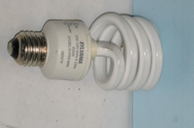
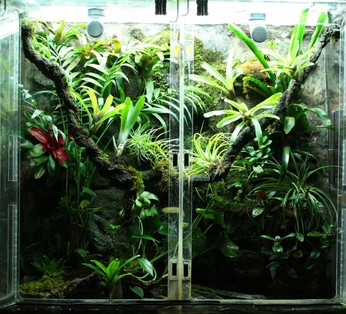
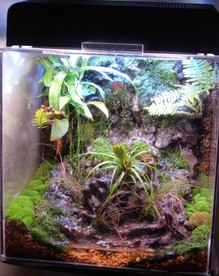
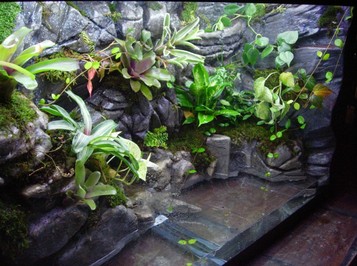
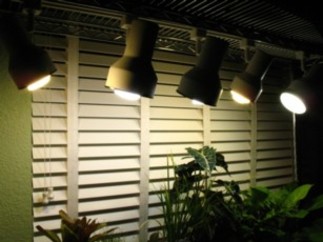


Notice the overall dark look of the tank. If this was a fuller spectrum light the color intensity would be much greater.
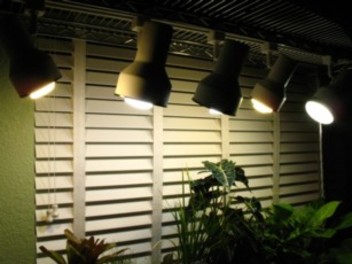
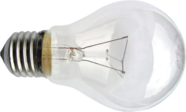


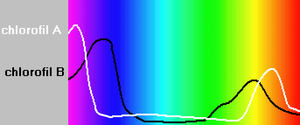
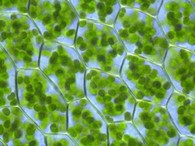
Visible chloroplasts inside moss cells.





www.aquatraders.com
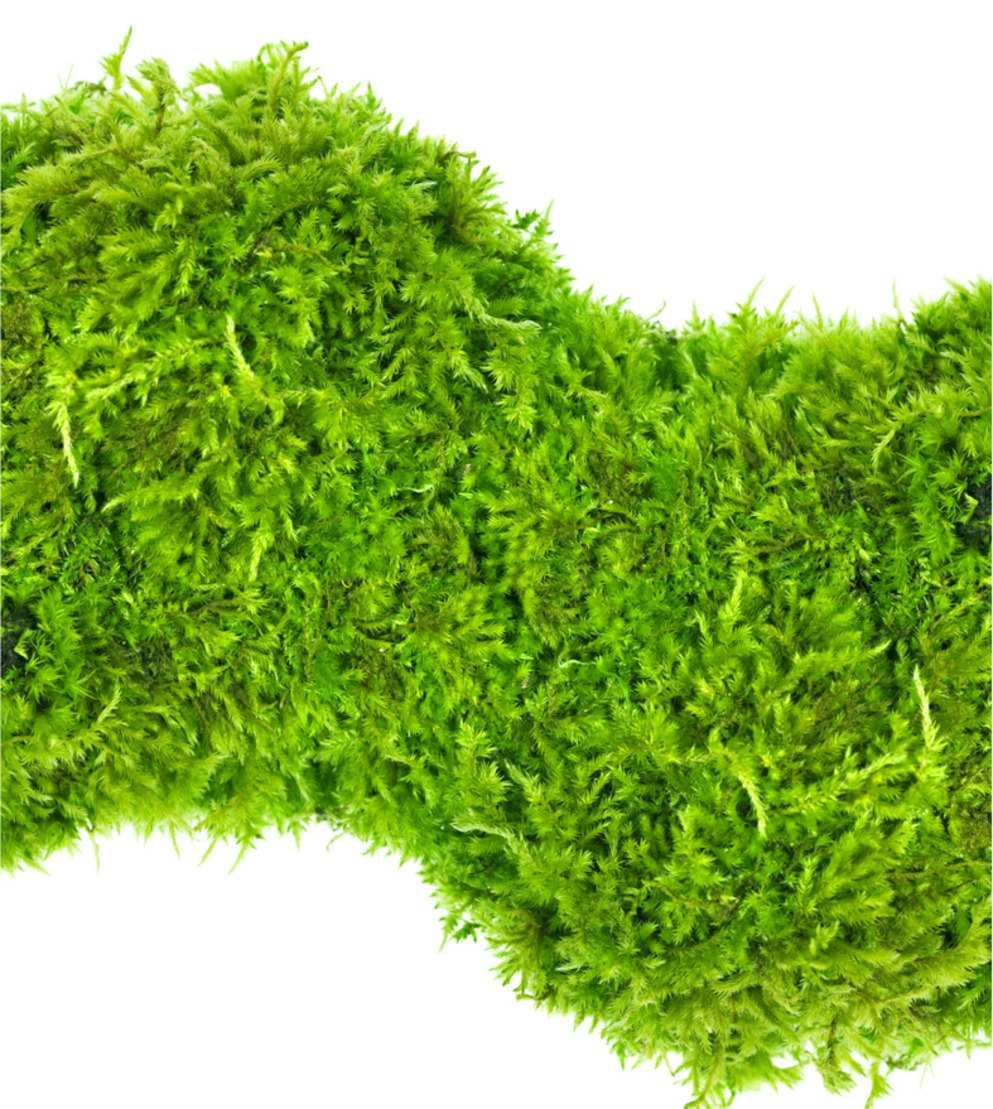

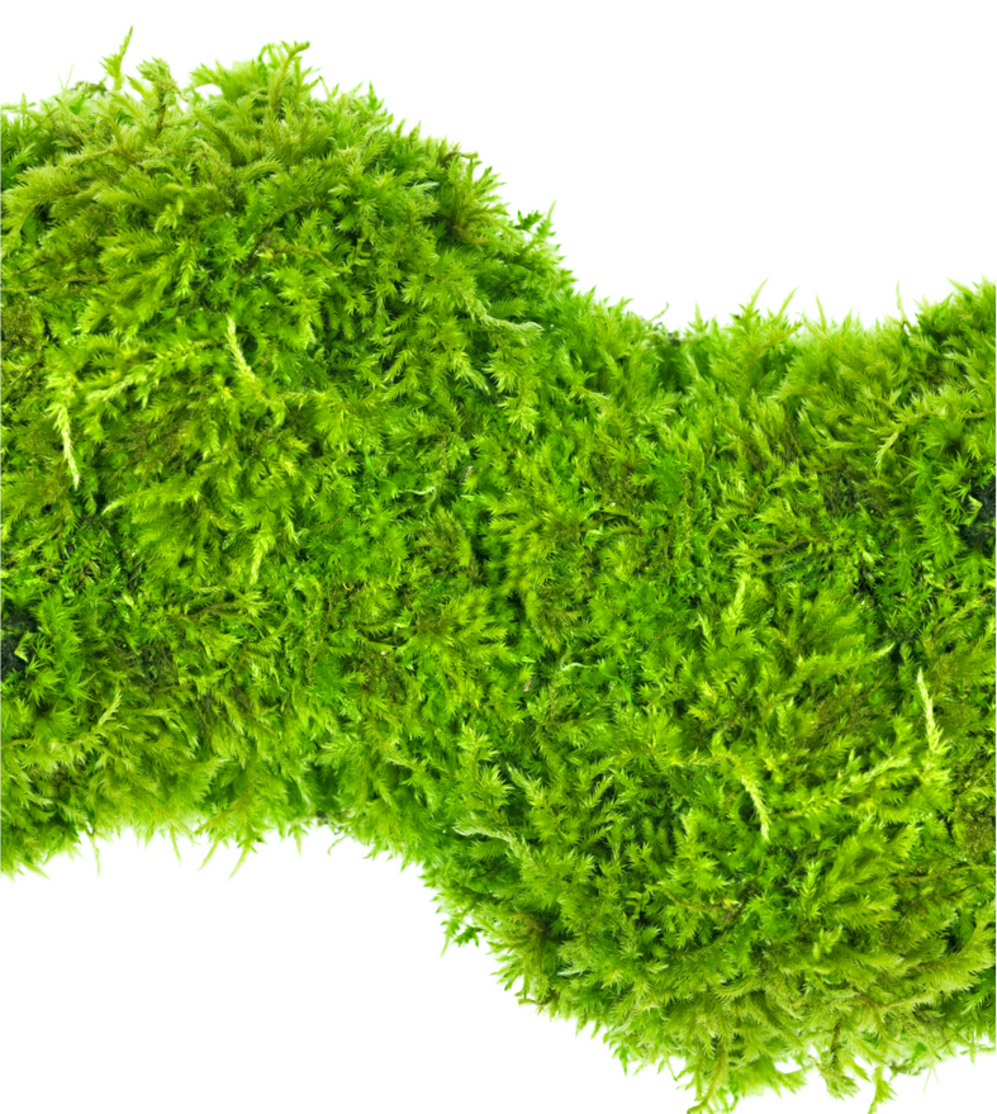
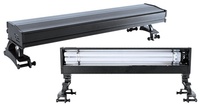
www.aquatraders.com
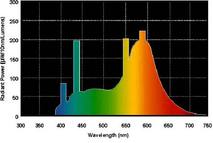
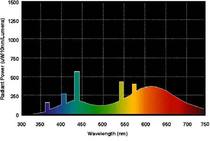
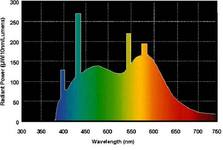
GE "Cool White" bulb spectrum. Notice intensity centered in the yellows. Not ideal for plant growth or vivarium illumination.
GE "Plant/Aquarium" bulb spectrum. Spectrum ideal for plant foliage growth but low relative intensity in the greens yields poor foliage illumination.
GE "Daylight" bulb spectrum. Good even intensity across majority of spectrum yields excellent color and sufficient intensity for foliage growth.
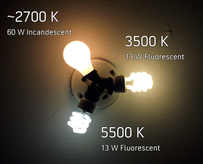

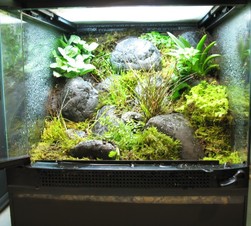
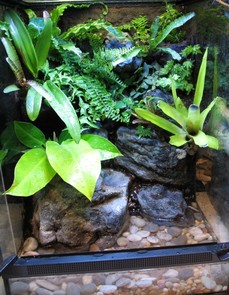
12X12X12 lit with single 23watt GE Daylight Spiral Compact Fluorescent Bulb.
18X18X18 lit with two 23watt GE Daylight Spiral Compact Fluorescent Bulbs and single actinic 13watt power compact.
18X18X24 lit with 4 23watt GE Daylight Spiral Compact Fluorescent Bulbs.
90 gallon lit with 48" power compact fixture. 4 65watt 10,000K bulbs.
36"X18" paludarium lit with multiple spiral compact fluorescent bulbs. Two more lights were added to further increase growth totaling 7 23watt Daylight bulbs.
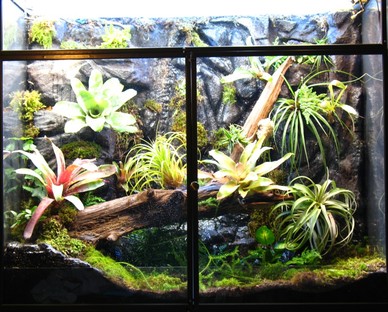
A single dual 250watt metal halide fixture would supply this 4'X2'X4'' vivarium with more intense light than the 10 T5 lights do.
4 48" 32watt T8 fluorescent bulbs, 4 23watt spiral compact fluorescents lit this vivarium. Despite the vivarium appearing appropriately lit, the plants soon lost much of their color intensity due to insufficient light. When in doubt, add more light!


www.aquatraders.com
